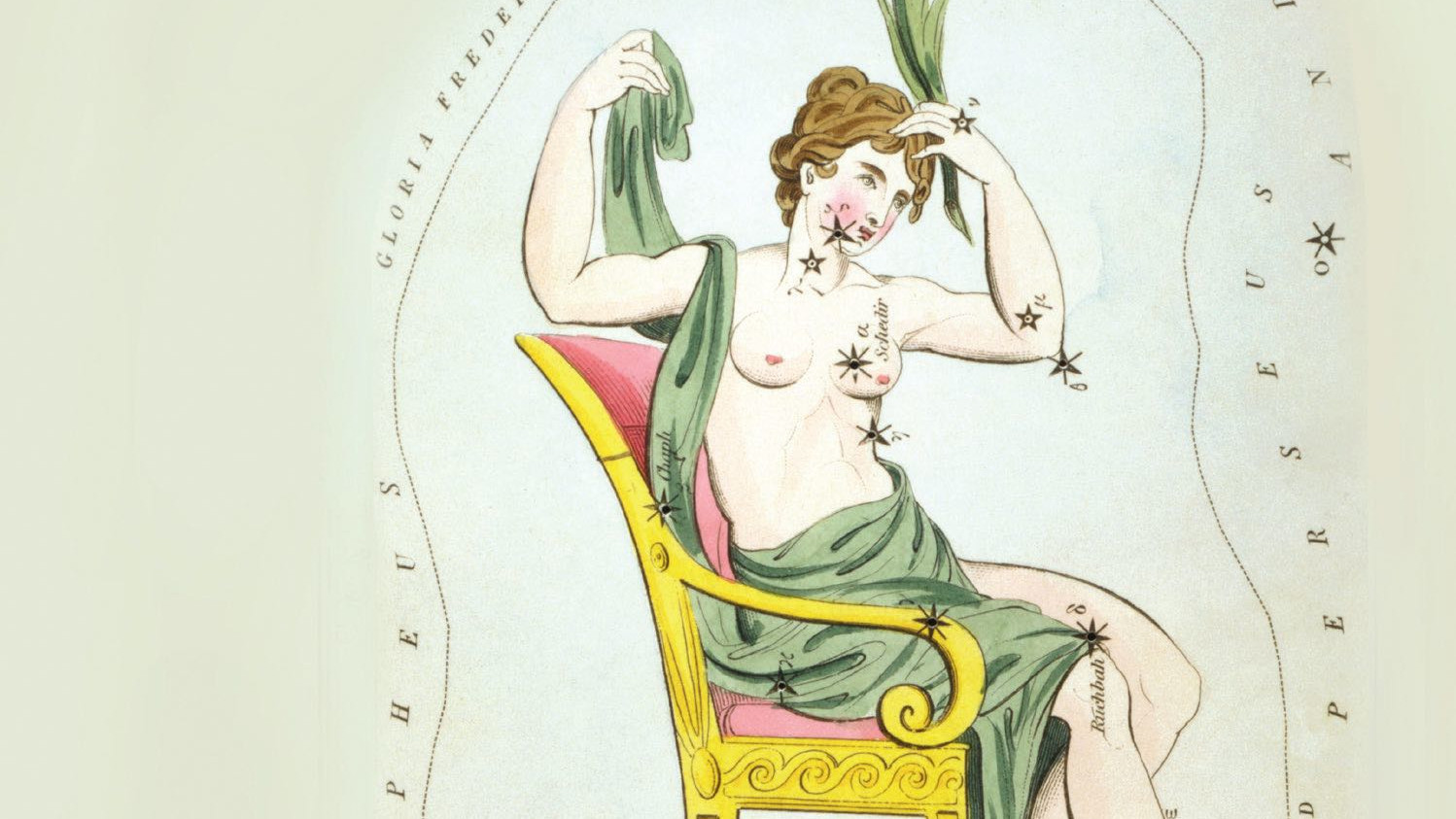Cassiopeia
This W-shaped constellation is located in the middle of the Milky Way and beckons with exotic giant stars and bright star clusters, all of which are also visible with binoculars.
 The constellation depicts the vain Queen Cassiopeia on her throne.
The constellation depicts the vain Queen Cassiopeia on her throne.The constellation of Cassiopeia is a W-shaped formation of five bright stars. It is visualised in many ways, ranging from moose antlers, to a group of five reindeer, to the court of the Celtic goddess Dôn. For Arab celestial observers, the constellation was part of a camel. This is also demonstrated in the name of the star β Cas, which literally translates as “the camel’s hump" in Arabic.
The most famous legend, however, is the regularly recounted legend of Cassiopeia, wife of King Cepheus, who attracted the wrath of the Gods. The queen boasted about her beauty and claimed to be even more beautiful than the sea nymphs. As punishment, she was to sacrifice her daughter, Andromeda, to a sea monster, an act which heroic Perseus was eventually able to prevent.
Luminous giants
You will discover two stars in constellation Cassiopeia, which are among the rarest and most luminous suns ever. They are yellow hypergiants, of which there are only 15 known examples in the Milky Way, and two of these exotic stellar specimens are to be found in this constellation. φ Cas appears in the night sky with a brightness of around mag 4.5 and shines half a million times more brightly than our Sun. Similarly, V509 Cas (HR 8752), which is just 7° distant, is around mag 5.3 bright and emits 200,000 times the energy of our Sun.
Various star clusters
Since this constellation is located in the middle of the shimmering band of the Milky Way, star clusters are one of the main features you can observe in Cassiopeia. The brightest of them is M52, which is one of the richest open star clusters in the northern sky, and which can be resolved with a small telescope. Other star clusters worth having a look at are M103, NGC7789 which was discovered by Caroline Herschel, and NGC457 which is also known as the Owl Cluster. With a little imagination, you can see the shape of a bird with outstretched wings and two bright eyes.
Less well known, but definitely worth a detour, is the Stock 2 star cluster. It is one of the better-known entries in the object catalogue compiled by the German astronomer Jürgen Stock, who discovered this star cluster in 1955. Because of its shape, which resembles a figure doing weight training, Stock 2 is better known by its nickname Muscle Man. Stock 2 consists of 8th magnitude stars, ensuring that this bodybuilder is even visible with binoculars mounted on a tripod - providing the sky is dark.
 Outline map of the constellation of Cassiopeia with our observing recommendations. J. Scholten
Outline map of the constellation of Cassiopeia with our observing recommendations. J. ScholtenAuthor: Nico Schmidt / License: Oculum-Verlag GmbH
